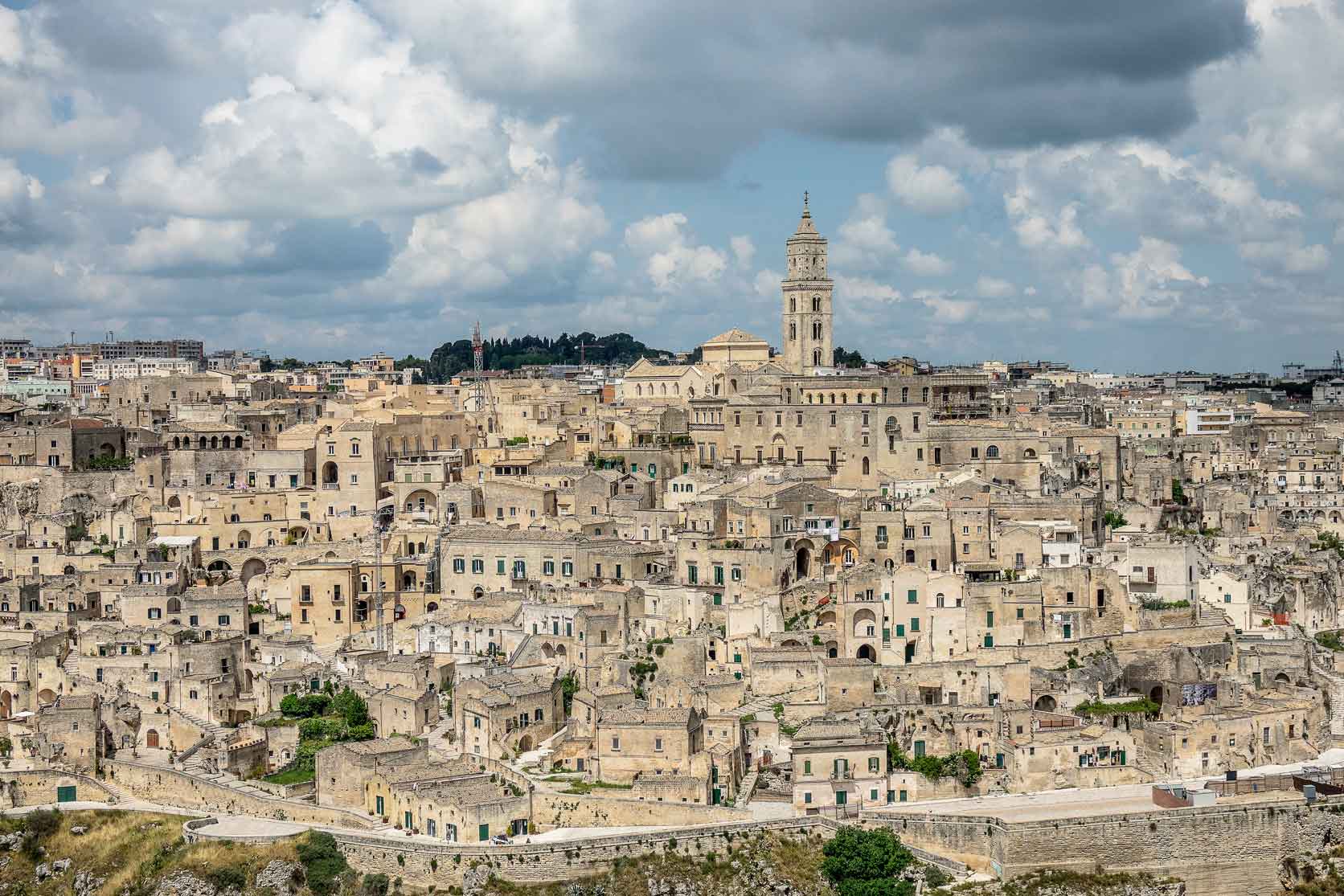The Sassi of Matera: what to see in this UNESCO World Heritage city
Are you looking for a unique place in the world? Matera is for you! This hidden gem is located in the heart of Basilicata, in southern Italy. Be amazed by its breathtaking landscape, an intricate labyrinth of tufa rocks and caves that have been transformed from ancient habitation sites into true works of art. Here is the story that, from the first excavation in the Paleolithic period, accompanies this town to the present day, passing through a period of decline after World War II and entering the UNESCO World Heritage list in 1993.
So, what is it like and what to see in Matera? Let's find out together.
The Sassi of Matera: what are they made of and how did they shape?
The Sassi of Matera are composed of tuff, a porous sedimentary rock, born from volcanic ash and different debris. Tuff is easily mouldable, which has made human settlement within these rocks possible since ancient times, with dwellings and living places set in stone. The Sassi of Matera have been silent witnesses of humanity since the Palaeolithic period, but it was in the Middle Ages that the settlements that characterize the town developed. As the mastery of stone-working perfected, the practice of excavation evolved and dwellings developed and diversified from rudimentary. Over time, the practice of digging into rocks also extended to the creation of more complex structures such as churches, monasteries, water cisterns and storehouses.
In short, the process of digging into rocks began primarily as a means of protection and shelter, but evolved over the centuries into a unique and innovative art of construction, with caves used for various purposes that today represent a valuable historical and cultural heritage.
From stones to UNESCO Heritage Jewels
Since the 1980s, preservation and redevelopment work began, and in recent decades the importance of the Sassi of Matera has been recognised worldwide. The Sassi were restored and transformed into hotels, restaurants, museums and homes, while their historical and cultural value was recognised internationally with their inclusion in the UNESCO World Heritage List in 1993, transforming the identity of these structures from a symbol of poverty to a cultural and tourist jewel.
And if you think there is no life left in these places, you are sadly mistaken! What is there to see in the Sassi? Museums, caves, spas, rock churches, tombs and houses. And what is there to do? Sleep in B&Bs carved into the rock, sit at a table inside a sasso to taste the local cuisine, take guided tours or discover famous film sets. Here is a guide to the best places to see in Matera!
Cava del Sole:
The Cava del Sole is a fascinating excavation area located in the heart of the Sassi di Matera. This quarry, once used for the extraction of tuff, has been transformed into an open-air museum that bears witness to the history and evolution of life in the Sassi and of extraction and processing techniques. Here it is possible to explore the dwellings excavated in the rock, gaining a close insight into the lives of those who lived there over the centuries.
Casa Cava:
Casa Cava is a complex of rooms excavated in the rock and transformed into an exhibition space. Here it is possible to explore different rooms illustrating aspects of daily life and culture in Matera over the centuries. The exhibition offers a detailed insight into the architecture and habits of the people who inhabited these caves.
Casa Grotta di Vico Solitario:
Like Casa Cava, Casa Grotta di Vico Solitario is an authentic example of a dwelling carved into the rock and recently restored to become a testimony to what daily life was like in the past. Especially for those who know little about this jewel of Basilicata, a tour inside these enchanting dwellings is the perfect opportunity to approach history in an unusual and wonderfully impactful way.
Chiesa di Santa Maria de Idris:
This rock church is an extraordinary example of religious architecture carved into the rock. The church is situated on a sensational panoramic hill, offering a breathtaking view of the city. The fascinating frescoed interior makes it a place of great historical and artistic interest.
Chiesa di Santa Lucia alle Malve:
The Church of Santa Lucia alle Malve is a fascinating complex of rooms carved into the rock that has been transformed into a unique worship space. The natural environment provides an evocative backdrop for veneration practices, creating a sacred and magical atmosphere. Ancient frescoes decorate the walls of this rock church, transporting visitors on a journey through faith and history, while the panoramic view of the city adds a touch of scenic beauty to this extraordinary experience.
NOT ONLY CAVES IN MATERA!
The Matera Cathedral:
Matera Cathedral, dedicated to Santa Maria della Bruna, is an example of Romanesque architecture. Its imposing and ornate facade attracts visitors' attention, providing a fascinating contrast to the surrounding caves.
Palombaro Lungo:
The Palombaro Lungo is a complex and ancient system of underground cisterns used in antiquity for collecting and storing rainwater. These cisterns were essential for the survival of the community, providing a vital source of water supply. Today it is possible to visit this cistern system and understand how it works with expert guides who will accompany you on your discovery.
Traditional cuisine:
Matera cuisine is genuine and flavorful. Typical dishes include "Matera bread," characterized by a particularly crunchy texture, and "orecchiette con cime di rapa," a handmade pasta dish with local vegetables. Don't miss the opportunity to also enjoy meat dishes, such as "braciola al pepe."
In order not to miss anything and discover the fascinating history of Matera, we invite you to book our tour or contact us to structure together the perfect stay with which to appreciate this Italian wonder!



